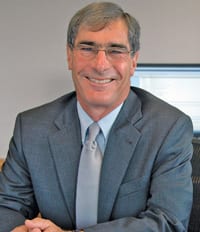
By Gwyneth K. Shaw
The judicial system — at the local, state, and national level — plays a huge role in society. Yet these institutions, and the very cases that play out every day, are often opaque, at least to the public.
It doesn’t have to be that way, says Jeremy Fogel, a former federal judge who’s the executive director of the Berkeley Judicial Institute (BJI). And over the course of three virtual events in June, he wants to help convince judges and reporters who cover them to pull back the curtain on the courts a bit more.
“The work of the press, like that of the courts, is vital to a thriving democracy,” he says. “We encourage both institutions to explore new ways to make their relationship mutually productive.”

All three parts of “Judges and the Press” are free and open to the public. Each will also feature the same panel of experts: Fogel; retired Judge Bernice Donald, who served as a federal appeals, district, and bankruptcy judge; Charles Hall, a public affairs specialist for the Administrative Office of the U.S. Courts; Senior Judge Marcia Krieger of the U.S. District Court for the District of Colorado; and Reuters journalist Dan Levine.
The first session on June 16 will cover why judges should communicate with the media. The second on June 23 will address how to make that happen, including building relationships with the media, helping them to better understand the nuances of what’s happening in court, and nuts and bolts such as what speaking “on background” means. The final session, set for June 30, is dedicated to how judges should work with media when a case is in process.
Building bridges
Each event begins at noon and will take place on Zoom. Click here to register for one or more of the sessions. Fogel says he hopes to attract judges, court administrators, and journalists, all of whom will be encouraged to ask questions during the webinars.
“We believe many judges would benefit from learning about and thinking through effective and ethically appropriate ways of communicating with the press,” Fogel says.
BJI, founded in 2018 to help build bridges between judges and academia to foster an ethical, resilient, and independent judiciary, organized the event after helping to put together a program earlier this year with the Federal Judicial Center and judges from the Ninth Circuit Court of Appeals about best practices for high-profile cases.
Krieger, who moderated that event, identified these types of cases as important opportunities for civic education and engagement, Fogel says. Public polling shows most people form their impressions about the judiciary from these types of cases.
And while the U.S. Supreme Court has a dedicated press corps — populated by correspondents with a deep understanding of the law, and sometimes even a law degree — lower-level courts may not. For a reporter assigned to a case without much experience in court, it’s easy to misunderstand a common practice and make a mistake.
To help bolster the accuracy of media coverage, Krieger and other judges have worked with the press to preview what might happen in a high-profile proceeding, giving reporters opportunities to address frequently asked questions about what to expect, Fogel says. After the Ninth Circuit event, he wanted to spread the practice to other jurisdictions and organized the BJI series, which is co-sponsored by the American Judges Association, the Federal Magistrate Judges Association, the First Amendment Coalition, IAALS, the Justice Speakers Institute, the Media Law Resource Center, and the National Conference of Bankruptcy Judges.
Courts already communicate with the press, particularly through their websites and scheduling systems. But often, he adds, publicly available information doesn’t explain the significance of rulings or other developments.
Increasing transparency
The thesis of the series is simple, Fogel says: Communicating with the media — under the right circumstances and in the right way — ultimately bolsters public confidence and understanding of the judiciary and the rule of law.
“While they are constrained by ethical rules from speaking directly about pending cases, judges can work to insure that court officials are sensitive to the needs of reporters, and they can participate in civics education programs unrelated to specific cases that help increase public understanding,” Fogel says. “Judges also can develop trusting professional relationships with reporters who cover the courts regularly, which can improve both the accuracy of reporting and judges’ understanding of public concerns.”
While this is the first time BJI has held an event on the topic of media communication, the institute regularly holds sessions aimed at helping judges do their jobs better. Past events have covered everything from new developments in forensic evidence to lessons courts learned from being forced to conduct proceedings virtually during the COVID-19 pandemic.
Transparency helps everyone, Fogel says, and BJI is dedicated to promoting a healthier relationship across multiple facets of the judicial system.
“We hope that all who participate in the program will come away with a better understanding that both the courts and the press have important responsibilities and face significant pressures,” he says. “We also hope to stimulate more ethical and mutually productive conversations between judges and the press.”